Mopalia hindsii (Sowerby in Reeve, 1847)Common name(s): Hind's chiton |
|
| Synonyms: (Listed as Mopalia hindsi in some references) | 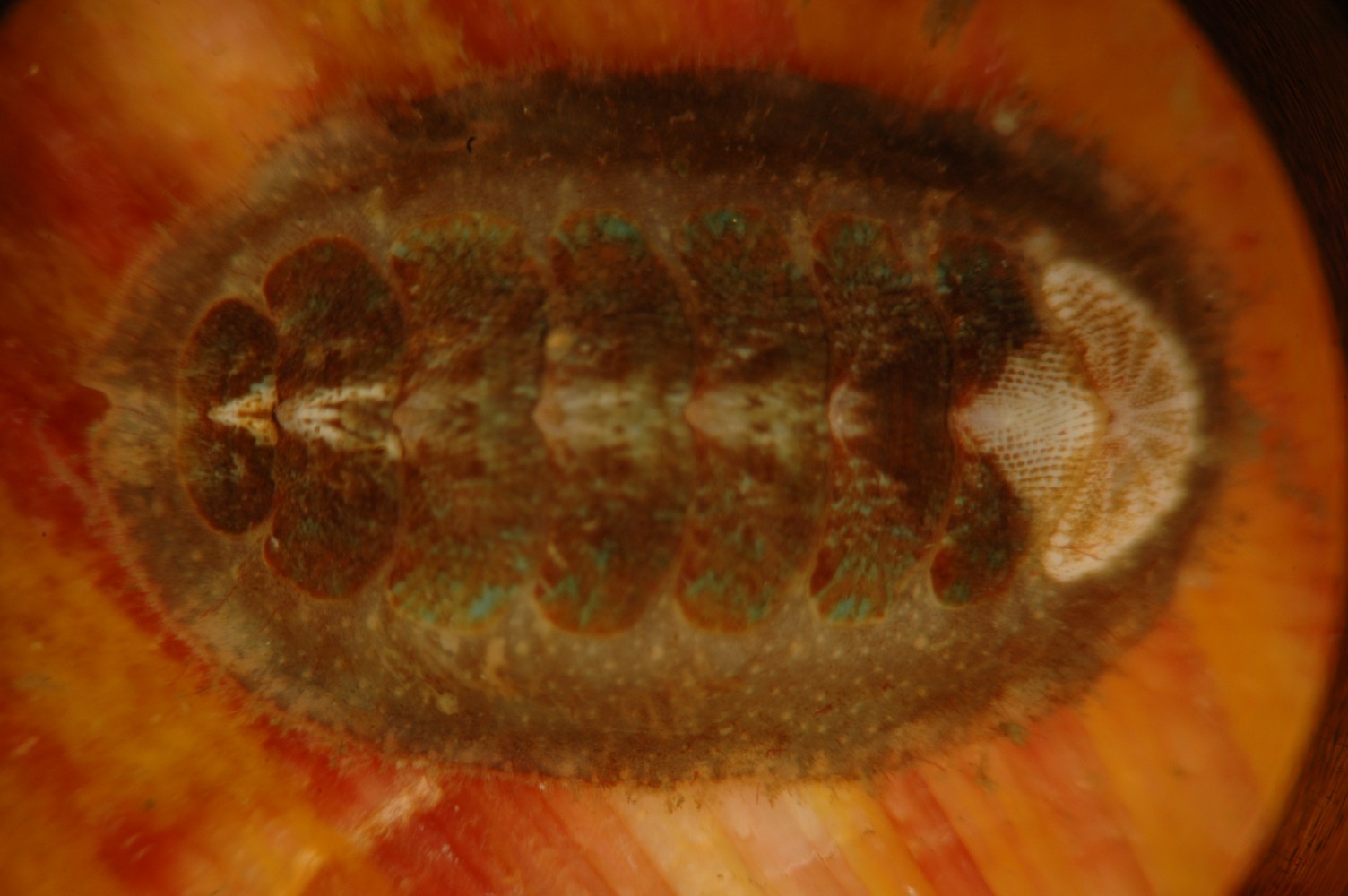 |
|
Order Neoloricata
Suborder Lepidopleurina
Family Mopaliidae
|
|
| Mopalia hindsii feeding on the sponge Myxilla incrustans which is growing on the shell of the scallop Chlamys hastata. | |
| (Photo by: Dave Cowles, July 2007) | |
How to Distinguish from Similar Species: Mopalia muscosa has dense, straplike hairs on the girdle. Mopalia lignosa has more hairs on the girdle and has no obvious rows of raised tubercles on the plates (but it does have pits), plus the posterior cleft in the girdle is absent or very small and the ventral girdle is orange. Neither M. muscosa nor M. lignosa has a prominent posterior cleft in the girdle. Mopalia ciliata does have a prominent posterior girdle cleft but its girdle hairs are strap-shaped, have glassy spicules, and branch other than at the base.
Geographical Range: SE Alaska to Ventura, CA. This species is said to be very common in California but is not often mentioned in guides to the Pacific Northwest.
Depth Range: Intertidal (and subtidal?)
Habitat: Common intertidally under rocks, both on outer coast and in bays.
Biology/Natural History:
This species
feeds on filamentous algae, diatoms, polychaetes, amphipods, and
barnacles
(and apparently on sponges). It is common on shaded pilings,
where
the valves are often overgrown by bryozoans, annelids, barnacles, and
hydroids.
The reproductive cycle is variable but in California it is mainly from
October to March. It does not brood its
young. It may
have the flatwormNexilis
epichitonius
symbiotic in its mantle cavity.
| Return to: | |||
| Main Page | Alphabetic Index | Systematic Index | Glossary |
References:
Dichotomous Keys:Kozloff 1987, 1996
Smith and Carlton, 1975
General References:
Harbo,
1997
Kozloff,
1993
Morris
et al., 1980
O'Clair
and O'Clair, 1998
Ricketts
et al., 1985
Scientific Articles:
Web sites:
General Notes and
Observations: Locations,
abundances, unusual behaviors:
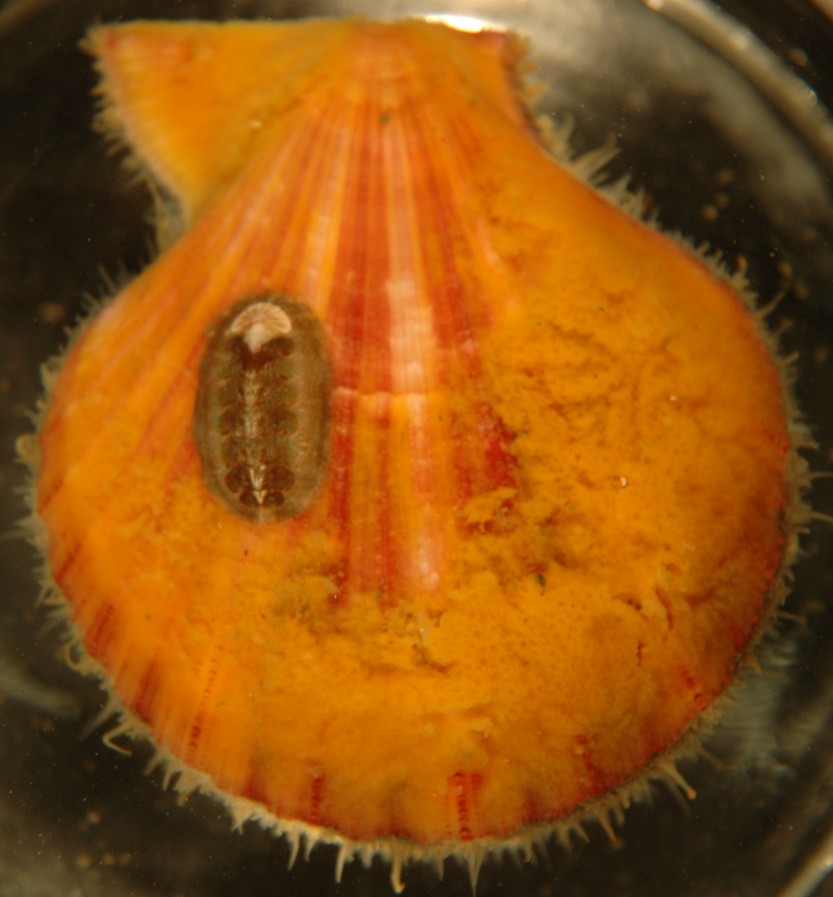
This larger view shows how the chiton is grazing the sponge
off the
scallop.
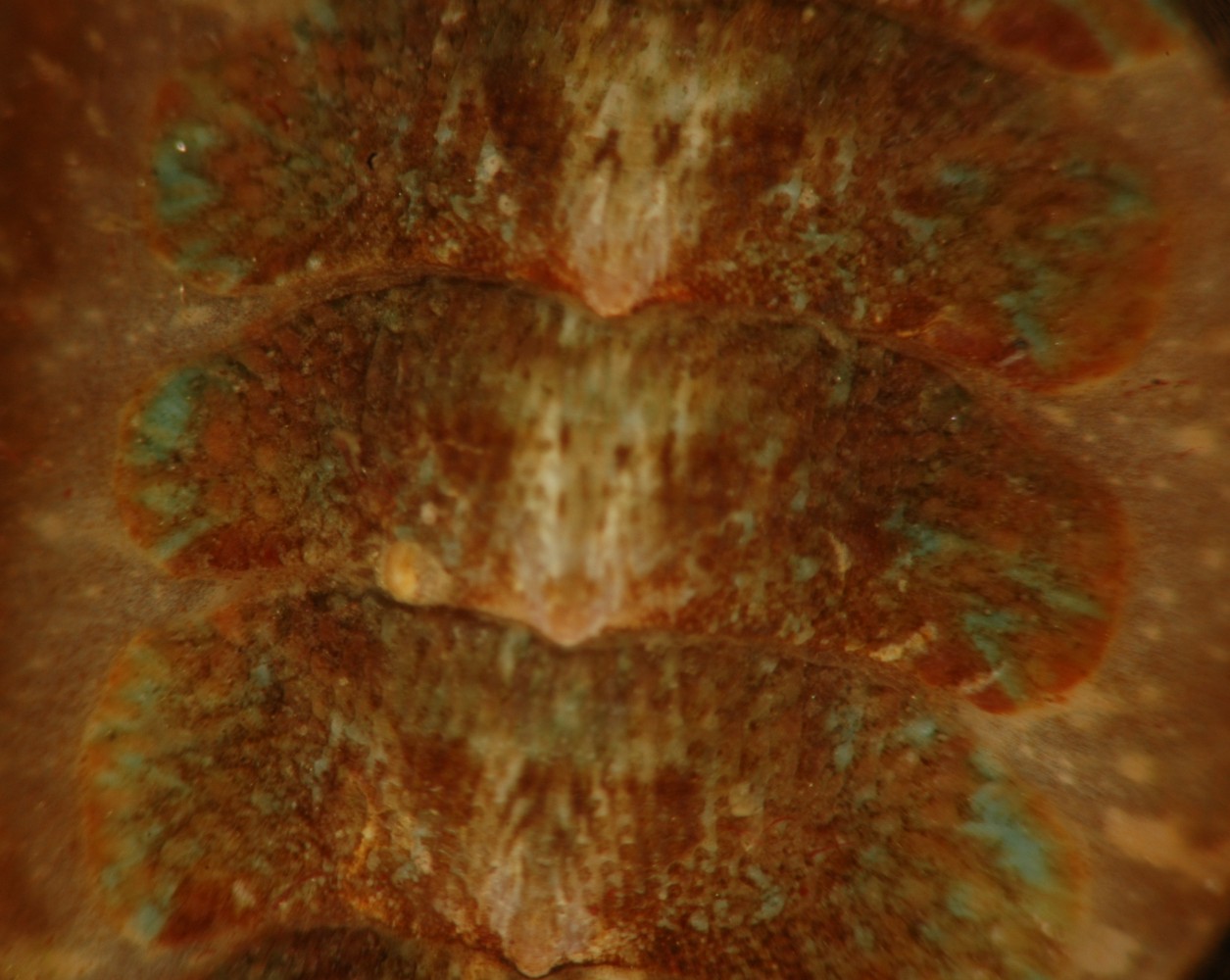
This closeup shows the detail on the plates, plus a view of some of
the girdle.
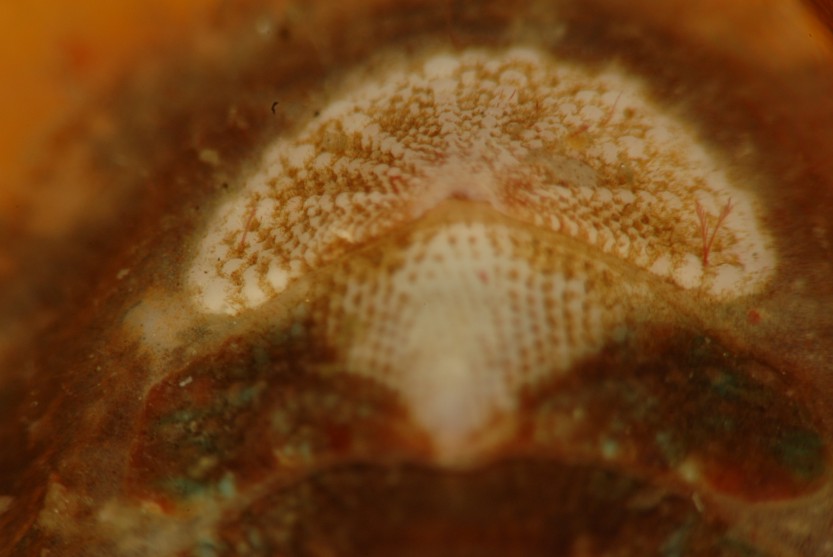
The anterior two plates of this individual have a lot of white.
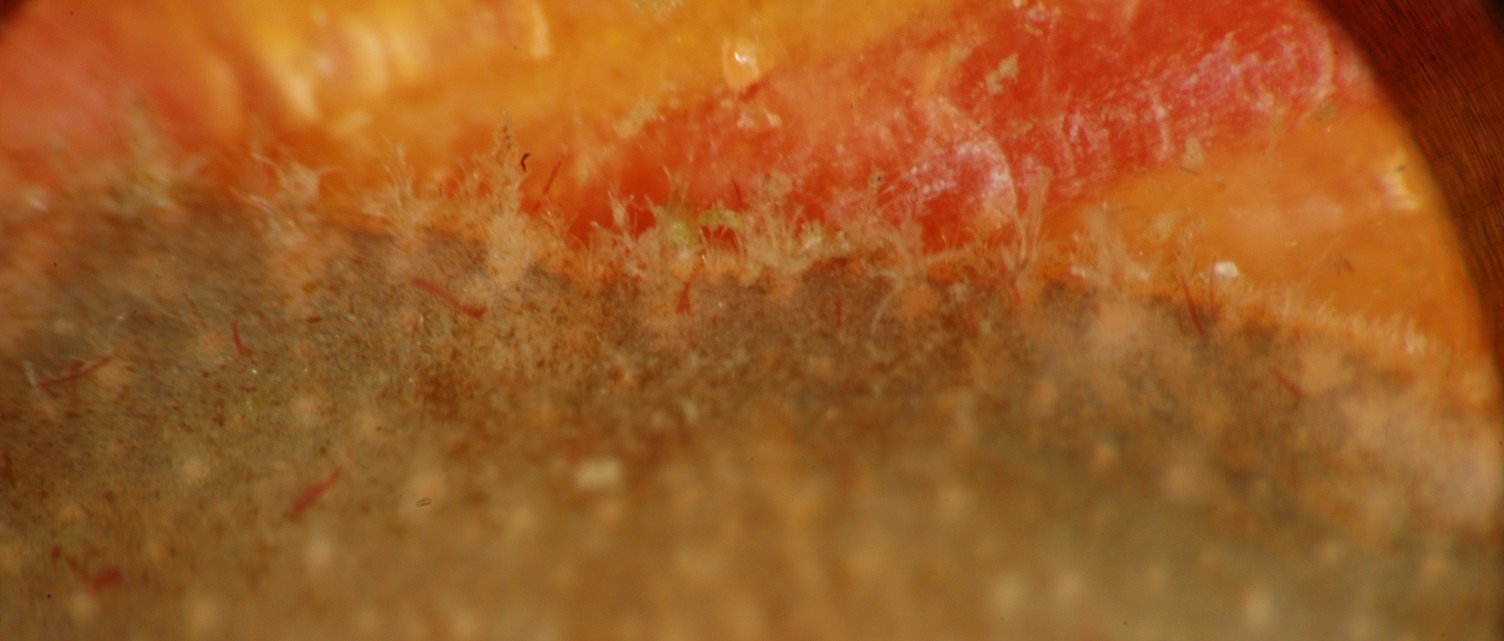
This closeup of some of the sparse girdle hairs, along the lateral
margin of the girdle, shows how the larger hairs branch from the
base.
The orange/pink background is the sponge and scallop that the chiton is
crawling on. Other than on these lateral areas and in some
areas
along the edges of the plates the girdle hairs are quite sparse.
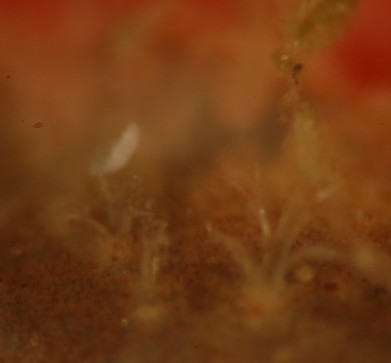
This closeup is of some girdle hairs which are not right at the margin
of the girdle.
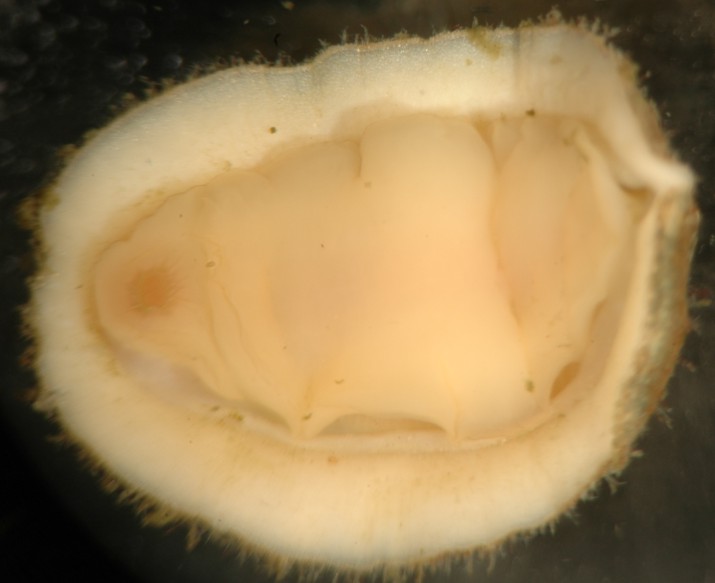
The underside of the girdle of this species is not orange.
Authors and Editors of Page:
Dave Cowles (2008): Created original page
CSS coding for page developed by Jonathan Cowles (2007)